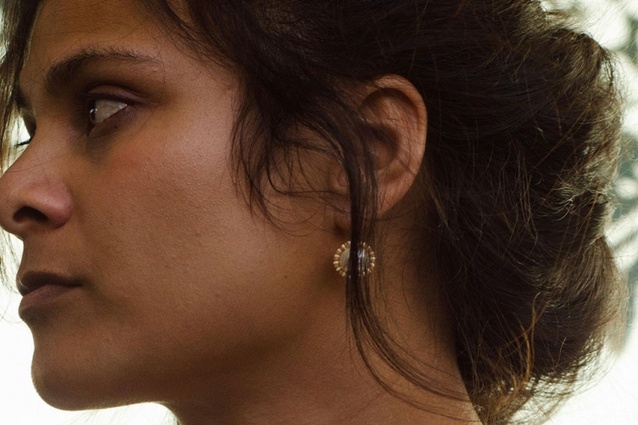Karamia Muller becomes first Sāmoan woman to receive a PhD in Architecture
Karamia Muller, a Pacific scholar who was born in the Solomon Islands, became the first woman of Sāmoan heritage to receive a PhD in architecture this January, the University of Auckland has announced.
Muller’s research focuses on the indigenisation of design methodologies, with a particular emphasis on the Pasifika and Sāmoan diasporas.
A lecturer at the School of Architecture and Planning at The University of Auckland, she also engages in a range of creative, multi-disciplinary practises, collaborating with people such as London-based Fijian artist Luke Willis Thompson (Sucu Mate/Born Dead) and New Zealand-based Australian artist Rebecca Ann Hobbs (Te Ihu o Mataoho). In 2012, she wrote the bilingual picture book, How Do You Say ‘Thank You’?, which was informed by her spatial practice and aimed to impart knowledge of Sāmoan language and culture.
Muller spoke with the University of Auckland about her PhD and “architecture from an Oceanic perspective.”
Does being Sāmoan shape your approach to architecture?
Karamia Muller: I am Sāmoan, and a member of the broader Oceanic community, and that shapes everything. I’m very interested in centring Oceanic voices, Oceanic spaces, and Oceanic narratives. It’s part of my genealogy. It’s a region that is rich, full of knowledge and ways of knowing and I love living in it, so yes, it does shape how I approach architecture.
You’re the first Sāmoan woman in the world to receive a PhD in Architecture. Has architecture, as a discipline, generally excluded Pacific people?
KM: Architecture has always been a part of the Oceanic landscape. Oceanic people were, and still are architects, builders, artists and philosophers of space since we navigated our way and settled across the region. In Sāmoa there is a history of architectural practice in the form of a builder’s guild, who, according to creation stories are the descendants of the gods. Perhaps as a discipline within the western framework it has been exclusionary, in the ways underrepresented populations face less access to particular fields or spaces. I would argue though, that we do see ourselves as builders and architects, and with the resources we have at hand we create the kinds of spaces we want to be in and we continue to do that.
What would someone learn, if they came to one of your lectures about Oceanic architecture?
You’d learn about relational thinking, in the built realm. The idea that space isn’t just a container, but space as connectivity. So the role of architecture to maintain relationships in Pacific spaces where Pacific values matter and are designed for. So it means thinking about how we can make spaces where Pacific relationships are honoured, Pacific value systems are honoured, where these dynamics are centred.
Karamia Muller spoke at the Indigenous Architecture symposium in Brisbane in November 2018. On this International Women’s Day she spoke at the The Pantograph Punch’s breakfast event The War Room inside the Spiegeltent at Aotea Square, Auckland.
This interview is republished from the University of Auckland with permission.
This article first appeared on architectureau.com.










